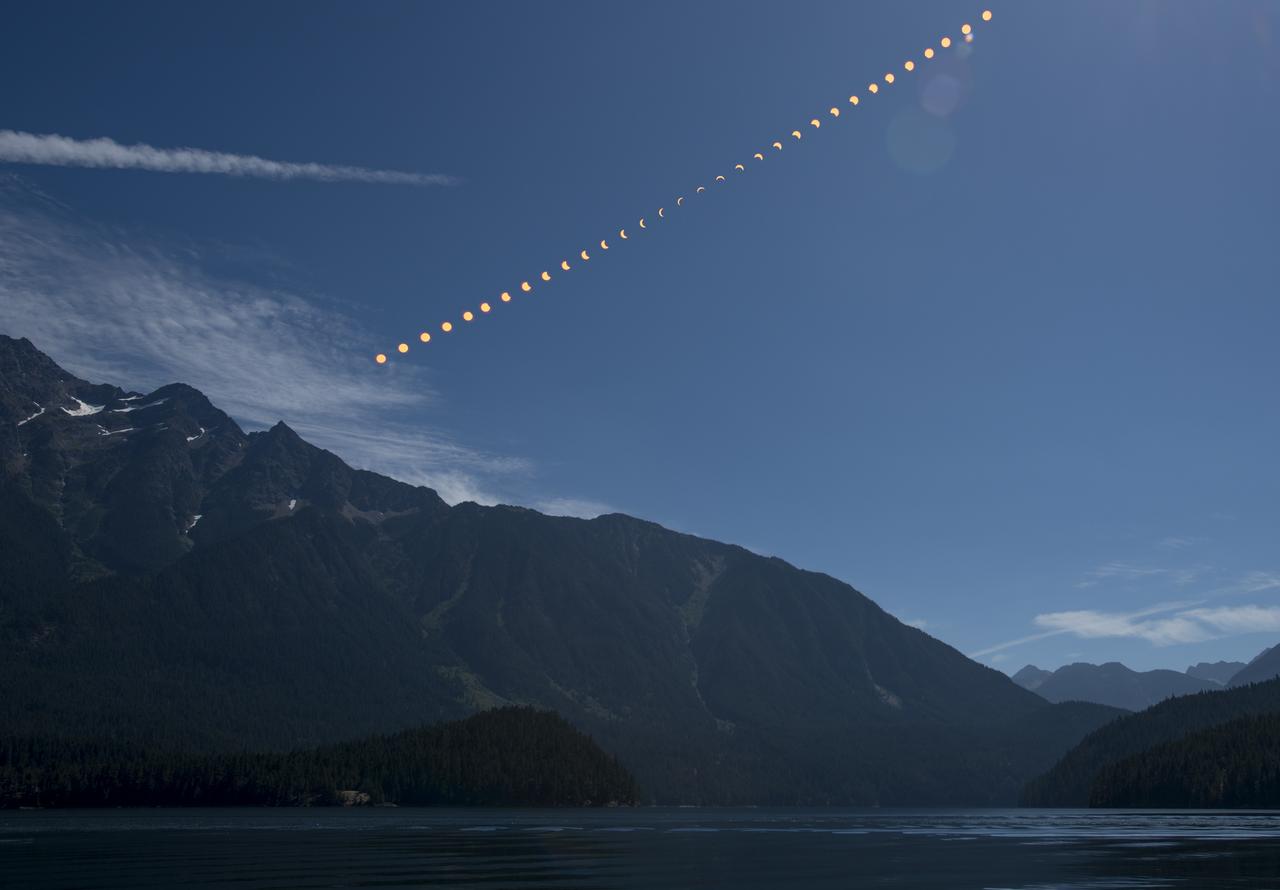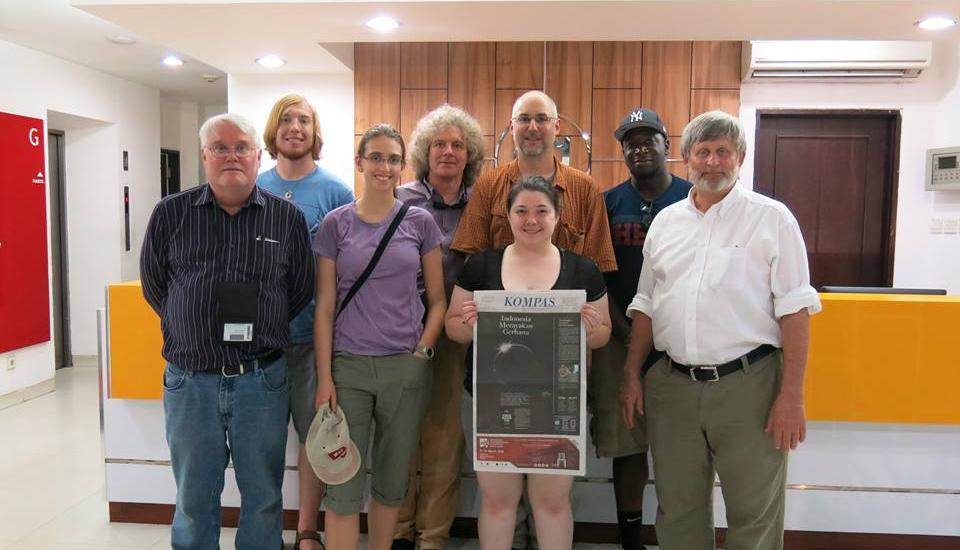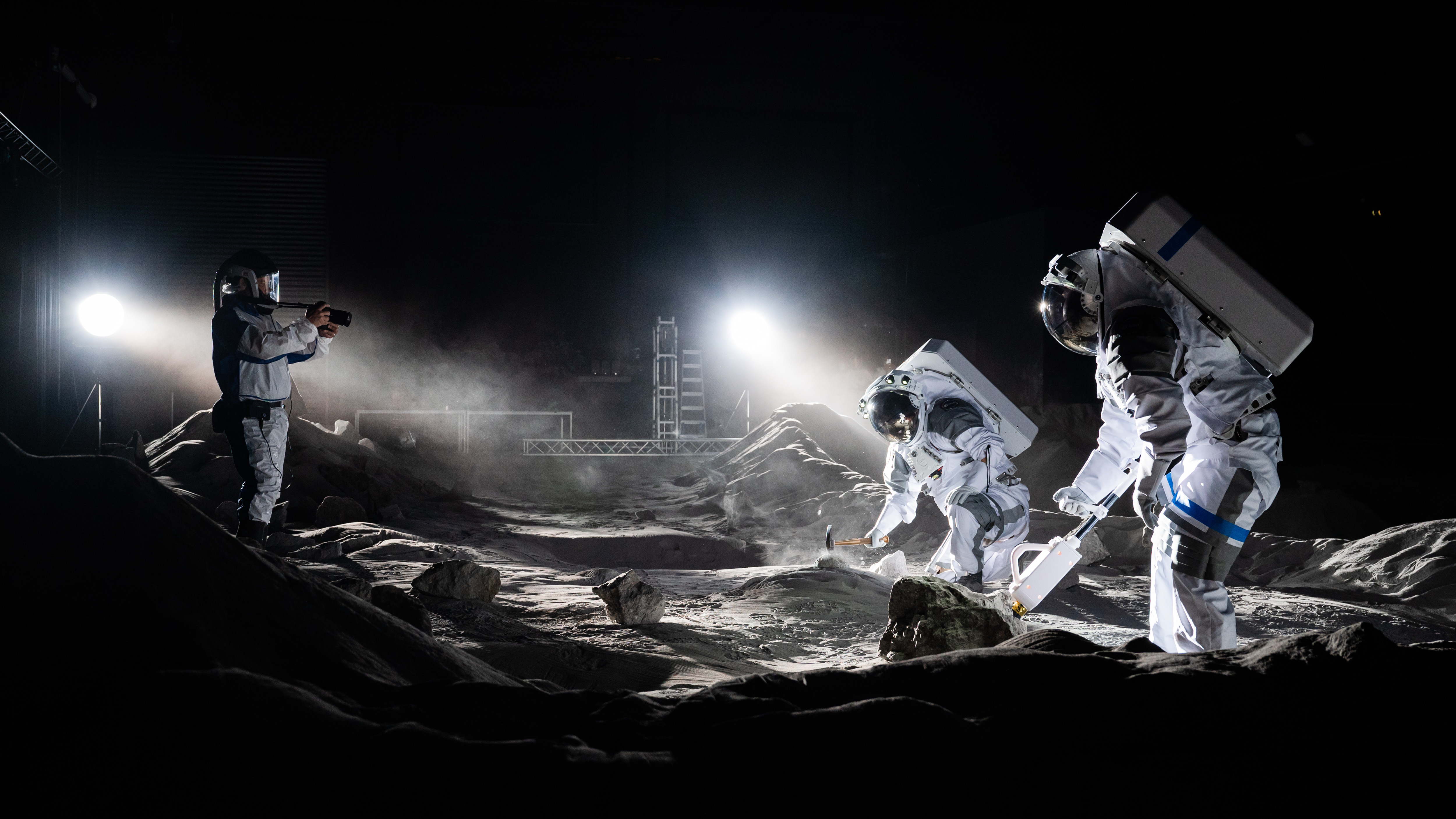What the 2017 Solar Eclipse Taught Us About Boosting Public Interest in Science
Last month, the contiguous United States experienced its first coast-to-coast total solar eclipse since 1918. Yesterday (Sept. 28), the U.S. House of Representatives Committee on Science, Space, and Technology met to discuss how the nation responded to the incredible astronomical event, how students and young people's enthusiasm about the eclipse can be harnessed to further engage them in science, and what sort of scientific information came from the eclipse.
"We have an extraordinary opportunity to turn enthusiasm for the Great American Eclipse into a renewal of American physics and astronomy that lasts far beyond the two minutes of totality," said Rep. Lamar Smith, R-Texas, chairman of the committee.
NASA and the National Science Foundation (NSF) spent years preparing for the eclipse, Thomas Zurbuchen, head of NASA's Science Mission Directorate, said during the hearing, resulting in what he called "the biggest science outreach event in modern NASA history." [The Most Amazing 2017 Total Solar Eclipse Photos Taken From Space]
Each of the 10 NASA organizations led major functions and events across 14 states, engaging nearly 7,000 libraries, 200 museums, and 20 national parks and baseball stadiums. NASA's website received over 90 million page views, "exceeding previous records many times over," Zurbuchen said.
In short, the eclipse was a national hit — and both amateurs and professionals were deeply moved, Zurbuchen said.
The science of the eclipse
While many people simply enjoyed the celestial show, others gathered scientific information about the eclipse. A total solar eclipse provides a brief glimpse of the outer atmosphere of the sun, called the corona. Typically, the corona is outshone by the brighter body of the sun, but during a total solar eclipse, when the moon is in front of the sun's body, the corona can be seen from the ground.
"Scientists scrambled to collect as much data as possible about the sun's faint corona," Heidi Hammel, executive vice president for the Association of Universities for Research in Astronomy, said during the hearing.
Get the Space.com Newsletter
Breaking space news, the latest updates on rocket launches, skywatching events and more!
Zurbuchen participated in a heliophysics mission 45,000 feet (14,000 meters) over the Pacific Ocean. On board a Gulfstream III, with regular windows replaced by optical glass for easier viewing, Zurbuchen and a team of scientists separated the wavelengths of light streaming from the sun in an effort to analyze the composition of the corona and the layer of the sun's atmosphere just below it, called the chromosphere. A solar instrument monitored and recorded the radiation environment within the aircraft. The event was streamed to NASA's website.
Another program, led by the NSF's National Solar Observatory, was the Citizen Continental-America Telescopic Eclipse Experiment (CATE). Across the nation, 68 teams of students spent the past year training to collect scientific information about the sun's hidden corona. The project served as a way to introduce and encourage young people to get involved in science, technology, engineering and math (STEM).
"This eclipse changed their lives, and their Citizen CATE observations may improve our lives," Hammel said. "These young people helped us gather the largest volume of science-quality data ever recorded."
According to Matthew Penn, an astronomer at the National Solar Observatory, the CATE observations filled a gap in coverage that even NASA's most advanced instruments can't fill. Over 45,000 images of the corona were collected, Penn said, though he has been able to process only about 300 of them in the past four weeks. Although each group experienced only about 2 minutes of totality, the combined images allow a view of how the corona changes across 93 minutes, he said.
"Even with just 1 percent of the CATE data analyzed so far, we're getting a new view of the corona that we haven't seen before," Penn said. "A lot of science will follow." [Here's What Scientists Have Learned From Total Solar Eclipses]
In 2016, the CATE program sent several students to Indonesia to view the eclipse, functioning as "on-the-job training" for this year's event, said James Ulvestad, the acting assistant director for the NSF. Those students not only worked with their newly produced data but also ran the workshops for the 2017 eclipse, training the next generation of students to take the important measurements.
"Having the young people engaged, involved and being the leaders themselves is a great way to capture them, intellectually and emotionally," Hammel said. "That's what will keep young women and other people engaged."
All 68 groups kept their telescopes after the eclipse, Penn said, and NASA is looking at a way to follow up with more nighttime projects.
"The students who were really excited about the eclipse are now excited about STEM," he said.
Volunteers and amateur astronomers also took part in several other citizen science events around the country.
"It's really valuable to have science done — valuable science done — by citizens and not just professionals," Zurbuchen said.

A sense of wonder
In addition to encouraging facilities to host events at their research centers, NASA urged them to engage their local communities. Chicago's Adler Planetarium is just one of many museums that sought to bring an astronomical event down to Earth.
According to Michelle Nichols-Yehling, the planetarium's director of public observing, the museum provided eclipse resources to myriad people who otherwise wouldn't have been able to view the eclipse. She said they distributed over 250,000 eclipse classes, more than 10,000 of which went to schools for students and teachers. They taught library and park employees how to hold solar viewing activities for the big event.
"We empowered people who did not have solar viewing glasses to find safe and easy ways to find other means" to watch the eclipse, Nichols-Yehling said.
Over 60,000 people attended the planetarium's eclipse-day viewing party, she said — more than 10 times the attendance record for an event at Adler. Many of those people had never interacted with the planetarium before, she said. She estimated that more than half a million people were impacted by Adler's engagement. [See NASA Satellites' View of Great American Solar Eclipse (Video)]
NASA itself handed out more than 4.3 million eclipse glasses. Committee member Rep. Donald Beyer, D-Va., asked if that number was low, given that an estimated 165 million people had planned to view the eclipse. But Hammel addressed his concerns.
"There's a great deal of sharing that can go on," Hammel said. That's because it took hours for the moon to slowly chip away at the sun, she added; people would gaze at the celestial show, and then pass their glasses to their family or friends as they waited for totality.
On top of that, there were other ways for the public to observe the eclipse. For example, cereal boxes can be easily converted into pinhole projectors. Nichols-Yehling said that as Adler worked with other institutions, she tried to find ways to engage their audiences as well. At a local botanical garden, for instance, she suggested watching the eclipse unfold on the ground through the shadows of leaves.
"The solar eclipse was a great opportunity for scientific research and citizen engagement in an event that brought a sense of wonder and curiosity to scientists and citizens alike," Ulvestad said.

Preparing for the worst
Although people on Earth don't often manage a direct look at the corona, humans frequently feel its effects when massive clumps of charged particles, or coronal mass ejections, impact Earth's atmosphere. The solar wind carries those particles throughout the solar system, functioning as a sort of extended solar atmosphere, Hammel said.
"We live inside the atmosphere of an active star," she said.
In 1859, charged particles from the sun struck the Earth in what is known as the Carrington event. Telegraph systems sparked, setting paper on fire.
"It's sobering to imagine the catastrophic social and economic interruption of a Carrington-like storm on today's infrastructure," Hammel said, including GPS and communication satellites and electrical grids. "That is why understanding the sun and space weather are critical national imperatives."
The eclipse provided a chance to match models of space weather up against the actual observations made by solar telescopes around the world.
"This gave us a chance to test the models that we're using from those observational telescopes and see if what they predicted was close to the truth or not," Ulvestad said. "That will enable us to refine the models and do better in the future."
That's important, Hammel said, because many models suggest a Carrington event is likely to happen again in the near future. "We're pretty close to maybe having another one," she said.
To help prepare for, and protect against, the potential destruction a Carrington event could cause, NASA scientists have teamed up with agencies such as FEMA and the Department of Energy to help understand how to predict solar storms and plan a response, Ulvestad said.
"It's real; it's going to happen sooner or later. So it's important that we're prepared for that," Hammel said. [The Sun's Wrath: Worst Solar Storms in History]
The next American eclipse
In April 2024, another eclipse will darken the skies above the United States, stretching from Texas to Maine. In many ways, the 2017 eclipse helped prepare NASA and other agencies for the upcoming event.
One thing those testifying said they learned was that agencies need to do a better job of publicizing the resources they prepare. For example, the NSF funded a web page of resources through the American Astronomical Society with instructions on how to observe the eclipse safely, but people who were not seeking that resource would never have known about it, Ulvestad said.
"We need to be more aggressive about marketing that kind of web page and information," Ulvestad said.
"It's important to remember that not everybody gets their news the same way," Zurbuchen added. He pointed to his daughter's account on Instagram, a social media resource he doesn't use. Safe viewing instructions need to go out through all of the communication channels, he said.
"It was really hectic right at the end," Nichols-Yehling said. During the two to three weeks before the eclipse, Adler received daily phone calls and emails asking how to view the eclipse safely, she said.
With concerns about faulty eclipse glasses surfacing before the 2017 solar eclipse, there should be a better method of vetting the 2024 glasses, said committee member Rep. Marc Veasey, D-Texas.
People should also be encouraged to practice using their eclipse glasses sooner, Zurbuchen said. Knowing what you should and shouldn't be able to see through them can go a long way toward safe viewing.
Hammel also pointed out that schools will be in session during the April 2024 eclipse. Concerned with their ability to ensure that children could safely view the astronomical event, many schools closed the day of the 2017 eclipse, wasting an incredible teaching opportunity, said committee member Rep. Suzanne Bonamici, D-Ore.
After the Great American Eclipse, however, another question looms: what to call the 2024 event.
"That's a good question," Zurbuchen said. "Do you have any suggestions?"
Editor's Note: This article was corrected to reflect that Citizen CATE is a project of the NSF's National Solar Observatory, not NASA.
Follow Nola Taylor Redd at @NolaTRedd, Facebook, or Google+. Follow us at @Spacedotcom, Facebook or Google+. Originally published on Space.com.
Join our Space Forums to keep talking space on the latest missions, night sky and more! And if you have a news tip, correction or comment, let us know at: community@space.com.

Nola Taylor Tillman is a contributing writer for Space.com. She loves all things space and astronomy-related, and always wants to learn more. She has a Bachelor's degree in English and Astrophysics from Agnes Scott College and served as an intern at Sky & Telescope magazine. She loves to speak to groups on astronomy-related subjects. She lives with her husband in Atlanta, Georgia. Follow her on Bluesky at @astrowriter.social.bluesky
